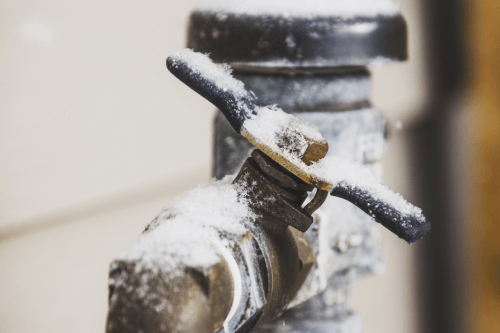Tips to Protect Pipes from Freezing: Professional Guidance
Tips to Protect Pipes from Freezing: Professional Guidance
Blog Article
Right here underneath you might get additional very good help and advice relating to Helpful Tips to Prevent Frozen Pipes this Winter.

Winter can ruin your plumbing, especially by freezing pipes. Right here's how to prevent it from happening and what to do if it does.
Intro
As temperatures drop, the danger of icy pipes rises, potentially bring about costly fixings and water damages. Understanding just how to avoid frozen pipelines is crucial for home owners in chilly climates.
Avoidance Tips
Shielding susceptible pipelines
Cover pipes in insulation sleeves or make use of warmth tape to safeguard them from freezing temperature levels. Focus on pipes in unheated or external locations of the home.
Home heating strategies
Maintain indoor spaces adequately heated up, especially areas with plumbing. Open cabinet doors to enable cozy air to circulate around pipelines under sinks.
How to recognize frozen pipelines
Look for lowered water circulation from faucets, unusual smells or sounds from pipelines, and noticeable frost on subjected pipelines.
Long-Term Solutions
Structural modifications
Think about rerouting pipes far from exterior wall surfaces or unheated areas. Include additional insulation to attic rooms, cellars, and crawl spaces.
Upgrading insulation
Buy high-quality insulation for pipelines, attic rooms, and wall surfaces. Proper insulation helps keep constant temperatures and minimizes the danger of frozen pipes.
Securing Outside Plumbing
Yard hose pipes and outdoor taps
Detach and drain yard hoses prior to wintertime. Mount frost-proof spigots or cover outside taps with shielded caps.
Understanding Icy Pipelines
What causes pipes to ice up?
Pipes freeze when subjected to temperatures listed below 32 ° F (0 ° C) for extended durations. As water inside the pipes ices up, it expands, taxing the pipeline walls and potentially causing them to rupture.
Threats and damages
Frozen pipelines can result in water supply interruptions, residential property damages, and expensive repair services. Ruptured pipelines can flooding homes and trigger substantial structural damage.
Indicators of Frozen Water Lines
Determining frozen pipelines early can avoid them from bursting.
What to Do If Your Pipes Freeze
Immediate actions to take
If you think frozen pipelines, maintain faucets open up to soothe pressure as the ice thaws. Utilize a hairdryer or towels soaked in warm water to thaw pipes slowly.
Verdict
Avoiding icy pipes calls for positive measures and quick actions. By understanding the reasons, signs, and safety nets, home owners can protect their pipes during winter.
5 Ways to Prevent Frozen Pipes
Drain Outdoor Faucets and Disconnect Hoses
First, close the shut-off valve that controls the flow of water in the pipe to your outdoor faucet. Then, head outside to disconnect and drain your hose and open the outdoor faucet to allow the water to completely drain out of the line. Turn off the faucet when done. Finally, head back to the shut-off valve and drain the remaining water inside the pipe into a bucket or container. Additionally, if you have a home irrigation system, you should consider hiring an expert to clear the system of water each year.
Insulate Pipes
One of the best and most cost-effective methods for preventing frozen water pipes is to wrap your pipes with insulation. This is especially important for areas in your home that aren’t exposed to heat, such as an attic. We suggest using foam sleeves, which can typically be found at your local hardware store.
Keep Heat Running at 65
Your pipes are located inside your walls, and the temperature there is much colder than the rest of the house. To prevent your pipes from freezing, The Insurance Information Institute suggests that you keep your home heated to at least 65 degrees, even when traveling. You may want to invest in smart devices that can keep an eye on the temperature in your home while you’re away.
Leave Water Dripping
Moving water — even a small trickle — can prevent ice from forming inside your pipes. When freezing temps are imminent, start a drip of water from all faucets that serve exposed pipes. Leaving a few faucets running will also help relieve pressure inside the pipes and help prevent a rupture if the water inside freezes.
Open Cupboard Doors
Warm your kitchen and bathroom pipes by opening cupboards and vanities. You should also leave your interior doors ajar to help warm air circulate evenly throughout your home.

As a keen reader on 6 Ways to Prevent Frozen Pipes, I was thinking sharing that article was a great idea. Sharing is nice. You just don't know, you could be doing someone a favor. We love reading our article about Prevent Frozen Pipes .
Request An Estimate Report this page